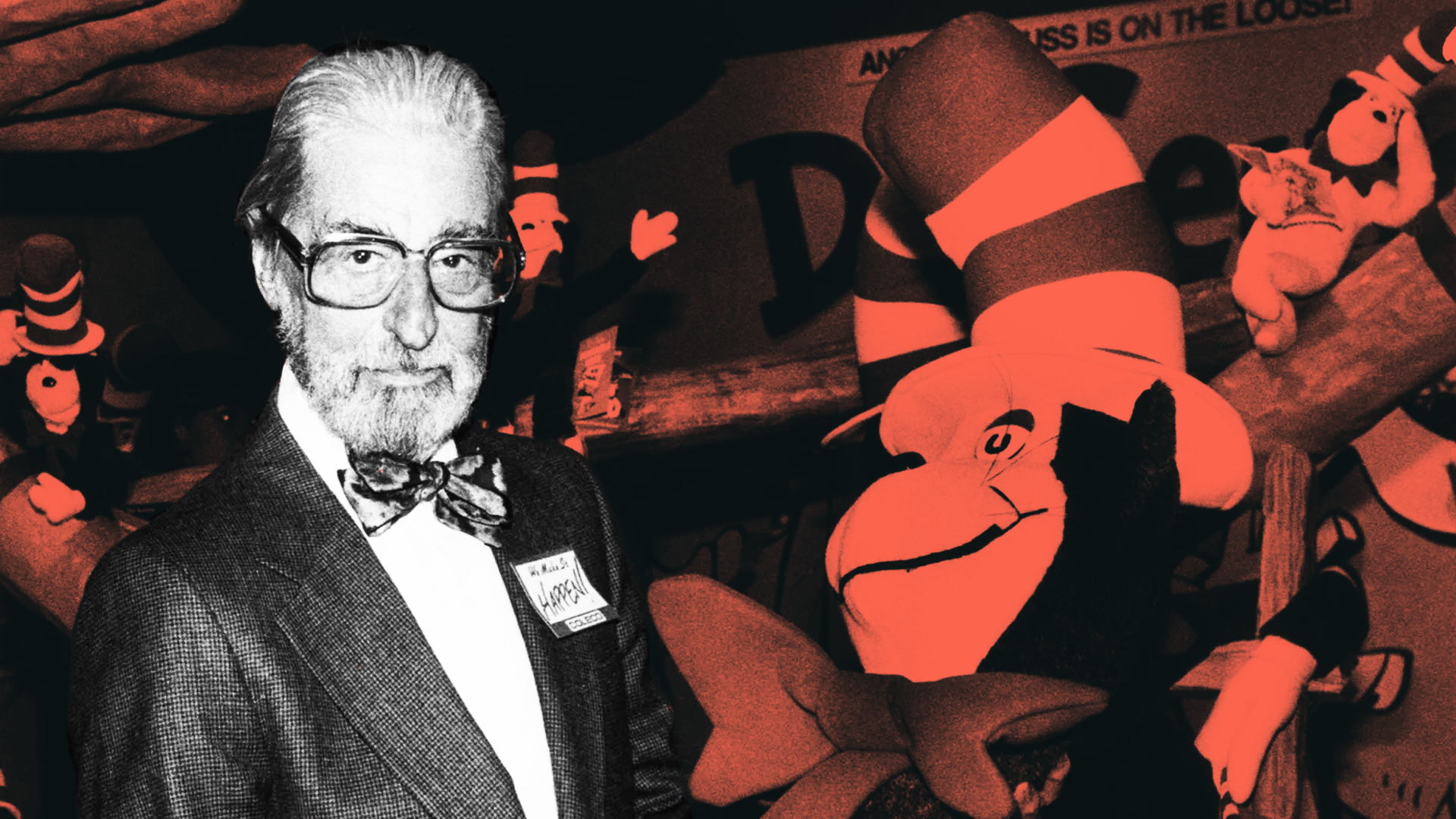Dr. Seuss (Theodor Seuss Geisel)

Dr. Seuss surrounded by his whimsical characters
Biography
Dr. Seuss wasn’t a doctor, and his real name wasn’t even Seuss, it was Theodor Seuss Geisel. But make no mistake: this whimsical word wizard changed the way kids learn to read in America. Born in 1904 in Springfield, Massachusetts, Geisel grew up doodling and dreaming in a world that didn’t quite make space for rule-breakers. So he made his own. After getting booted from his college humor magazine for breaking Prohibition laws, he kept writing under the name 'Seuss'.
He didn’t plan on becoming the most influential children's author of the 20th century. But after dropping out of Oxford, working in advertising, and making WWII propaganda films, Geisel finally found his lane. When a publisher challenged him to write a children's book using only a few hundred simple words, Geisel responded with The Cat in the Hat. It was clever, chaotic, and unlike anything kids had ever seen. Suddenly, reading wasn’t boring, it was fun.
Dr. Seuss wrote over 60 books, many of which became classics like Green Eggs and Ham, One Fish Two Fish Red Fish Blue Fish, The Lorax, and Oh, the Places You’ll Go! His writing was joyful but subversive. Underneath the tongue-twisters and rhymes were big ideas like protect the environment, stand up for the underdog, and embrace your weird. In Horton Hears a Who, a giant elephant protects a microscopic world because, as he reminds us, 'A person’s a person, no matter how small.'
Geisel never believed in talking down to children. He didn’t write 'for kids'—he wrote for curious minds who could handle truth dressed up in rhyme. His stories weren’t just silly, they were smart. Books like The Lorax warned about corporate greed and climate destruction long before those ideas went mainstream. He saw what was out of whack and dared kids to imagine how things could be better. He made space for imagination and activism—sometimes in the same sentence.
Dr. Seuss died in 1991, but his legacy lives on in classrooms, bookstores, and bedtime routines everywhere. More than just a children’s author, he was a literary revolutionary who believed that reading could be an act of liberation. He gave us characters who rhymed their way through nonsense and found meaning on the other side. His biggest accomplishment? Teaching generations of kids that reading isn’t a chore, it’s an adventure. And once you start turning pages, there’s no telling where you’ll go.
Dr. Seuss didn’t just teach kids how to read, he taught them how to think. His stories championed environmental stewardship, the absurdity of prejudice, the value of individuality, and the quiet power of speaking up. In an era when many children's books were boring primers, he unleashed color, chaos, and conscience. He showed that art could be protest, play could be powerful, and reading could be radical. The world is weirder—and wiser—because of him.
?
What makes Dr. Seuss’s stories feel so timeless and universal?
How did Dr. Seuss use rhyme and rhythm to make reading more fun—and more powerful?
Many of Dr. Seuss’s books carry deeper messages. What issues did he care about, and how did he express them?
Why do you think so many artists and writers say they were inspired by Dr. Seuss?
What would a Dr. Seuss story about today’s world look like?
Do silly stories help us understand serious problems better? Why or why not?
If you could invent your own Seussian creature, what would it look like and what would it do?
Dig Deeper
In this video about one of the world's most beloved children's book authors, you will learn many facts about both the author and his cherished books. While he was not really a doctor, he healed many hearts through his fun world of make-believe characters and places.
Discover more

Walt Disney
Walt Disney showed that imagination isn’t just for dreamers, it’s a blueprint for building new worlds, one idea at a time.

Helen Keller
Helen Keller overcame the isolation of being both deaf and blind to become a world-renowned author, speaker, and advocate for disability rights, women’s suffrage, labor rights, and social justice.

Florence Nightingale
Florence Nightingale was the founder of modern nursing, a data-driven reformer, and a fierce advocate for public health and social care.
Further Reading
Stay curious!
